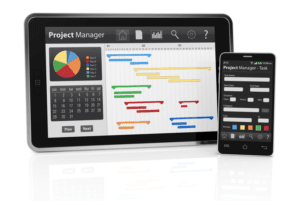
This graph illustrates how mixed costs behave, with the fixed component represented by the starting point on the y-axis and the variable component by the upward slope. The total cost increases with production levels due to the variable cost, while the fixed cost remains constant. Variable costs are expenses that fluctuate directly with the https://mindsome.app/online-hr-services-payroll-benefits-and-everything-11/ level of production or sales activity within a business. Unlike fixed costs, which remain constant regardless of output, variable costs increase as production rises and decrease as production falls. These costs are directly tied to the production process, meaning that they change in proportion to the level of goods produced or services provided. Variable costs are essential for understanding example of mixed costs the scalability of a business and for performing cost-volume-profit (CVP) analysis.
- Viktoriya is passionate about researching the latest trends in economics and business.
- However, the cost cut should not affect product or service quality as this would damage sales.
- Thus, the mixed cost can be broken down into a fixed cost of $5,000 and a variable cost of $5 per unit.
- Part of the cost stays the same regardless of your business activity, while the rest increases or decreases depending on how much you produce, sell, or operate.
- For every copy that is made, the total cost of copies increases bt $0.02.
- From there, management tools are implemented to monitor and reduce the cost per unit made.
Business Hours
- Thus, much of their labor becomes a variable cost – though not the cost of the managers, whose salaries are paid regardless of output.
- In this example, the restaurant’s ingredient procurement exemplifies the variable aspect of mixed expense.
- ‘a’ stands for the fixed cost—this is the part that doesn’t change no matter how much you produce or sell.
- The fixed costs include rent, utilities, storage, equipment and insurance.
- There’s the farming aspect (which is comprised of both fixed and variable costs), there is the actual harvesting process (again, both variable and fixed costs), storage, packing and then distribution.
- This method involves using statistical techniques to identify the fixed and variable elements of a mixed cost.
Variable costs, in contrast, change directly and proportionately with changes in the level of production or sales. These costs increase as production increases and decrease as production decreases. Common examples of variable costs include raw materials, direct labor, and sales commissions.

We and our partners process data to provide:
Keeping a close eye on cost components allows businesses to react quickly to changes and adjust their operations to align with their financial goals. Accurately capturing the mixed costs allows for a more realistic assessment of profitability and aids in setting competitive prices, enhancing financial planning, and guiding strategic initiatives. Implementing cost allocation methods such as activity-based costing or cost pooling can aid in accurately attributing utility costs to specific departments or products. Embracing a proactive approach to cost management, through energy conservation initiatives or negotiating favorable utility contracts, can further optimize financial performance. This proactive approach enables businesses to efficiently manage their variable costs, ensuring sustainable financial performance and profitability.

How Can Mixed Costs Be Managed?
In order to effectively undertake their function, managers should be able to predict the behavior of a particular cost in response to a change in particular business activity. For this purpose, costs are primarily classified as variable, fixed and mixed costs. This article explains the difference among these three types of costs as well as their response to business activities. This technique helps people comprehend how changing variables can influence outcomes accordingly.
Importance of Variable Cost Analysis
By correctly classifying costs as fixed, variable, or mixed, businesses can create more reliable budgets and forecasts that reflect their true financial situation. These costs are often referred to as “overhead” because they are necessary to keep the business running, regardless of its production levels. For this reason, variable costs are a required item for companies Travel Agency Accounting trying to determine their break-even point. In addition, variable costs are necessary to determine sale targets for a specific profit target.
These methods offer greater accuracy in cost estimation, budgeting, and financial insight – improving overall efficiency. Mixed costs contain two parts – a fixed cost component and a variable cost component. The proportion of each component in the total cost may vary depending on production volume. It can change its entire labor force, managerial as well as line workers. In some leasing situations, there is a base rent, and then a percentage of sales on top of the base. Let’s imagine that you rent a space for a small retail location in your local mall.

The mixed cost formula
The break-even point occurs when fixed costs equal the gross margin, resulting in no profits or losses. In this case, when the bakery sells 45 cakes for a total variable cost of $675, it breaks even. In general, companies with a high proportion of variable costs relative to fixed costs are considered to be less volatile, as their profits are more dependent on the success of their sales.

With a detailed view of these mixed cost definition costs, you can estimate how mixed costs will vary with different activity levels, which is a good way to construct a budget that accurately reflects company operations. Having a knowledge of mixed costs also allows managers to make the correct decisions, in cases where decisions are derived from a firm’s cost structure. The fixed costs include rent, utilities, storage, equipment and insurance. When that unit is finally produced, it has both components in it and this is referred to as the mixed cost of production. Often the cost of production is much more complicated because there is much more to producing and getting the product to market. Think of all the folks and tools involved in delivering something as simple as produce to the grocery store.

This part of cost behavior is vital for proper cost analysis and management. Fixed costs also play a critical role in setting prices for products or services. They ensure that prices cover all overhead expenses, contributing to overall expense management. Rent for office space, salaries for permanent staff, and insurance premiums all fall under fixed costs. Now, let’s dive into understanding each component that makes up mixed cost..
No comment yet, add your voice below!